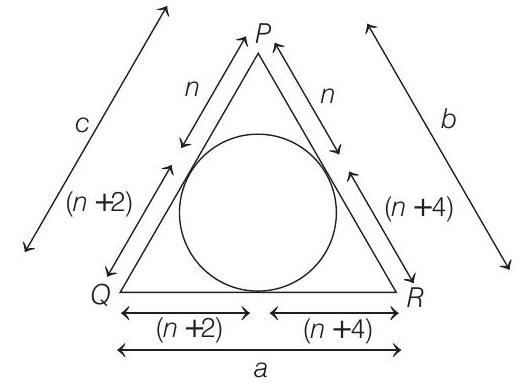Properties of Triangles 1 Question 12
12. In a
(2017 Main)
(a) 16
(b) 18
(c) 24
(d) 22
Show Answer
Answer:
Correct Answer: 12. (b)
Solution:
- PLAN Whenever cosine of angle and sides are given or to find out, we should always use Cosine law.
i.e.
and







